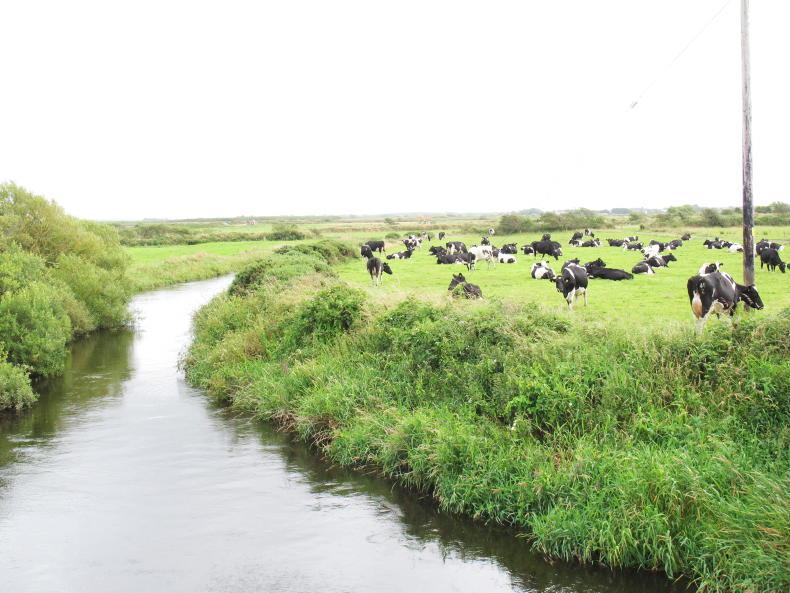Once the growing season arrives, farmers begin to apply nutrients to their land. This can be in the form of chemical or organic fertilisers.
Optimising the use of fertilisers in the early growing season is essential. Appropriate application will lead to better utilisation of nutrients and better returns in grass/crop growth.
This, in turn, will ensure less nutrients are lost to the environment – waters and atmosphere.
This will also lead to savings for the farmer, with costly losses minimised and a reduction in the quantity of nutrients needed to be spread due to a greater level of utilisation.
The protection of waters (drains, watercourses, streams, lakes, wells, abstraction points for public water supplies, karst features, etc) from nutrient losses is a key part of the nitrates regulations.
When farmers are applying both chemical and organic fertilisers to fields, they need to be aware that they may need to adhere to buffer zones.
A buffer zone is an area adjacent to a water body that no chemical and organic fertilisers (or pesticides) can be applied to.
These zones vary in width and are required to protect waters from losses of nutrients.
Why is it important to adhere to buffer zones?
Water quality in Ireland has declined somewhat in recent years and is an early warning we all should heed.
Losses of nutrients from land to water bodies is having an impact on this.
These diffuse losses of nutrients are losses can be at field or farm scales where nutrients reach streams, rivers, lakes or groundwater and can be affected by farming activities such as spreading of slurry or fertilisers.
Diffuse losses of nutrients from chemical and organic fertilisers are most likely to occur when soils are at or close to saturation. When soil is saturated or waterlogged, the soil can’t soak anymore water.
The water stays on the surface of the field and will flow over the surface, with the fall of the land towards drains or streams, and potentially bring the recently applied fertiliser nutrients with it.
This will have an impact on water quality in the adjoining water body.
Reducing risk
Where a buffer zone is in place this will provide a “break” between where the nutrients are applied on the field and the adjoining water body, reducing the risk of nutrients reaching the water. A permanent fenced-off buffer zone or riparian margin can offer increased protection to the water body.
Buffer zones vary in width depending on the water body and also the time of year.
For example, the buffer zone alongside a drain, watercourse or river is 5m during the open period for spreading slurry.
However, this should be increased to 10m in the two weeks before the closed period and the two weeks after the closed period, ie for an extra two weeks in October and an extra two weeks in January.






 This is a subscriber-only article
This is a subscriber-only article










SHARING OPTIONS: